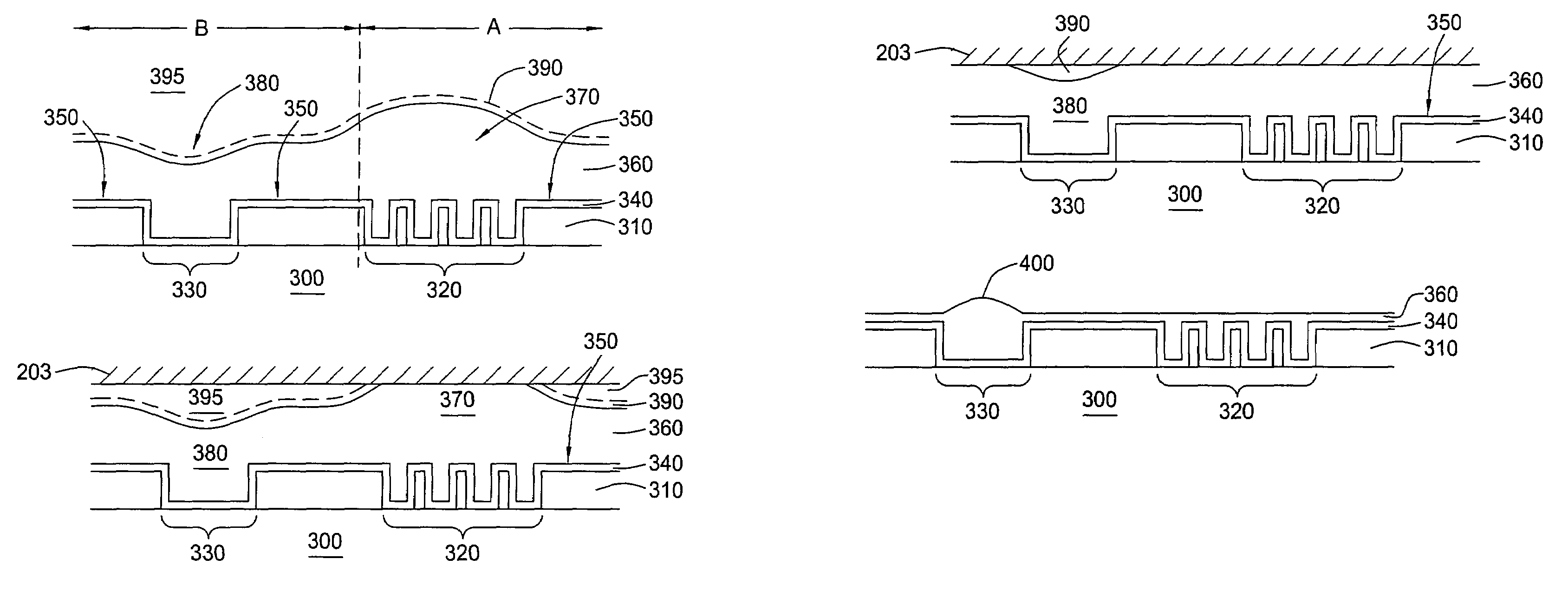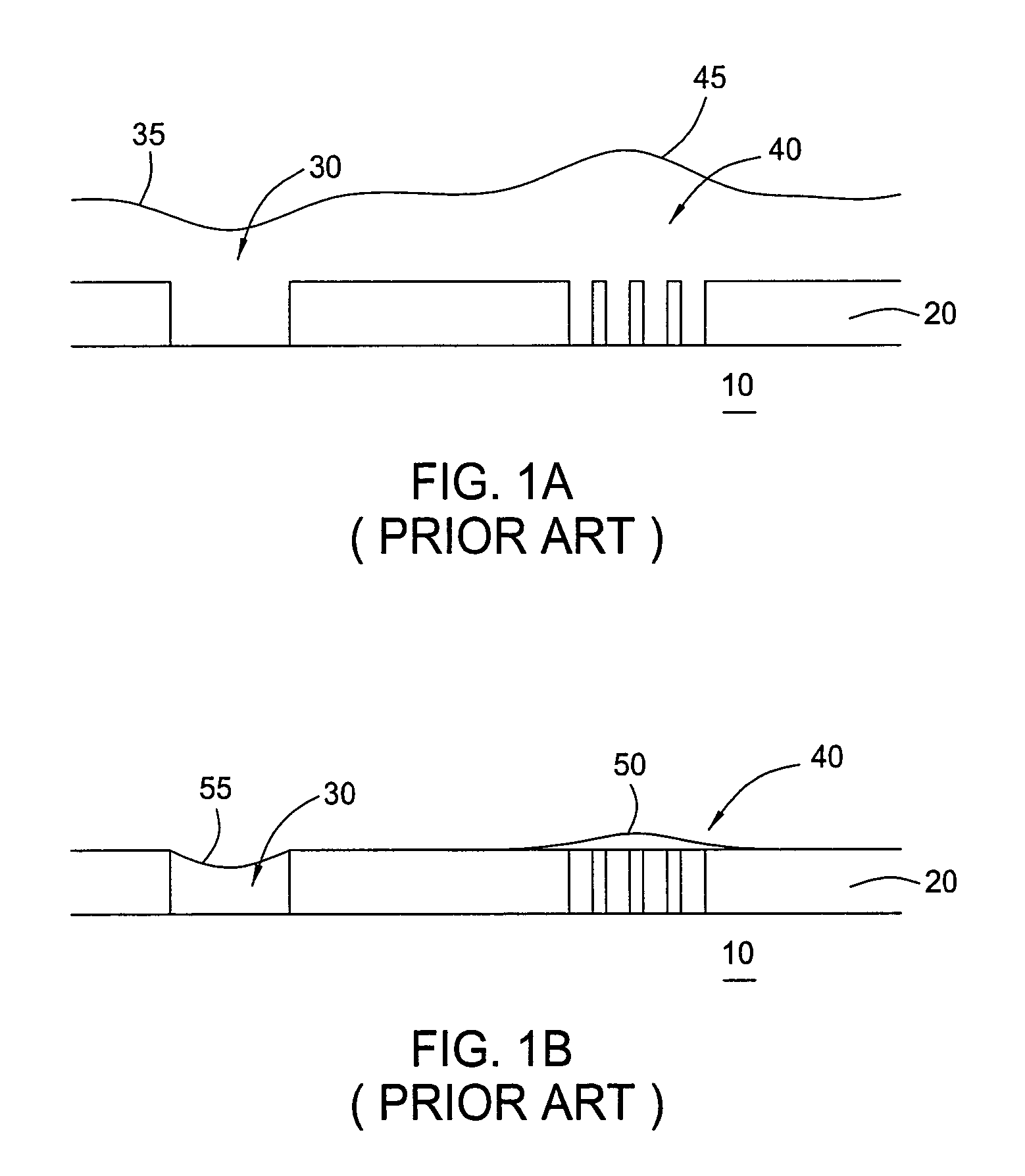Method and composition for polishing a substrate
a technology of substrate and composition, applied in the direction of lapping machines, water dispersions, other chemical processes, etc., can solve the problems of uneven surface formation, undesirable residue retention, and residue dishing on the substrate surface, and achieve the effect of high removal ra
- Summary
- Abstract
- Description
- Claims
- Application Information
AI Technical Summary
Benefits of technology
Problems solved by technology
Method used
Image
Examples
example 1
[0115]A copper plated substrate was polished and planarized using the following polishing composition within a modified cell on a REFLEXION® system, available from Applied Materials, Inc. of Santa Clara, Calif. A substrate having a copper layer of about 11,500 Å thick on the substrate surface with a step height of about 6,000 Å was exposed to a polishing composition of:
[0116]about 6% by volume phosphoric acid;
[0117]about 2% by volume ethylenediamine;
[0118]about 2% by weight ammonium citrate;
[0119]about 0.3% by weight benzotriazole;
[0120]between about 2% and about 6% by volume of potassium hydroxide to provide a pH of about 5; and
[0121]deionized water, and
[0122]a polishing article was contacted with the substrate at about 0.2 psi at a bias of about 3 watts / volts was applied during the process. The substrate was polishing and examined. A protrusion height of about 4,000 Å was observed over wide feature definitions.
example 2
[0123]A copper plated substrate was polished and planarized using the following polishing composition within a modified cell on a REFLEXION® system, available from Applied Materials, Inc. of Santa Clara, Calif. A substrate having a copper layer of about 11,500 Å thick on the substrate surface with a step height of about 6,000 Å was exposed to a polishing composition of:
[0124]about 6% by volume phosphoric acid;
[0125]about 2% by volume ethylenediamine;
[0126]about 2% by weight ammonium citrate;
[0127]about 0.3% by weight benzotriazole;
[0128]between about 2% and about 6% by volume of potassium hydroxide to provide a pH of about 5; and
[0129]deionized water, and
[0130]a polishing article was contacted with the substrate at about 0.2 psi at a bias of about 3 watts / volts was applied by a pulse technique of 10 seconds on and 2 seconds off for 8 of cycles. The substrate was polishing and examined. A protrusion height of about 1,500 Å was observed over wide feature definitions.
PUM
| Property | Measurement | Unit |
|---|---|---|
| contact pressure | aaaaa | aaaaa |
| contact pressure | aaaaa | aaaaa |
| velocity | aaaaa | aaaaa |
Abstract
Description
Claims
Application Information
 Login to View More
Login to View More - R&D
- Intellectual Property
- Life Sciences
- Materials
- Tech Scout
- Unparalleled Data Quality
- Higher Quality Content
- 60% Fewer Hallucinations
Browse by: Latest US Patents, China's latest patents, Technical Efficacy Thesaurus, Application Domain, Technology Topic, Popular Technical Reports.
© 2025 PatSnap. All rights reserved.Legal|Privacy policy|Modern Slavery Act Transparency Statement|Sitemap|About US| Contact US: help@patsnap.com



